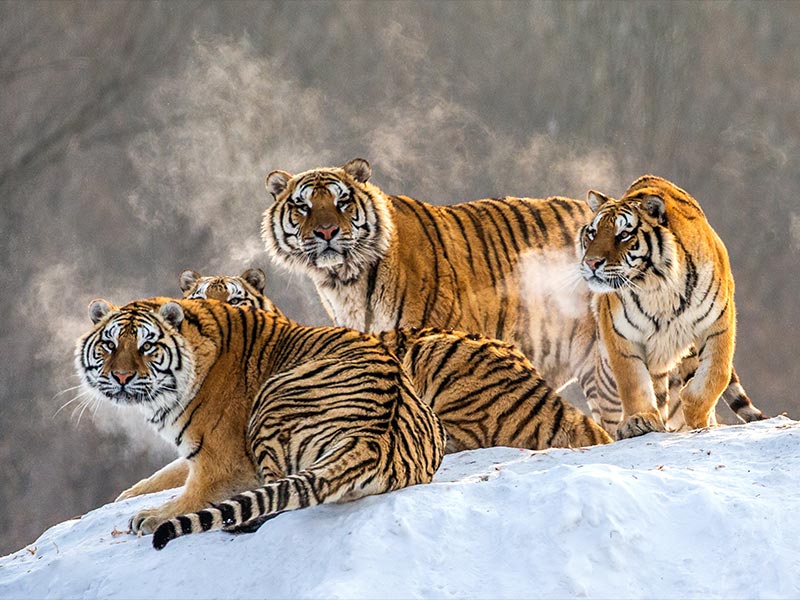Though it might seem strange that tigers—one of the most iconic predators—have bright orange fur, this color actually serves as effective camouflage in their natural habitats. The secret lies in the vision of their prey.
Many animals that tigers hunt, like deer, have dichromatic vision, meaning they perceive the world primarily in shades of blue and green. To them, the orange fur of a tiger doesn’t appear as bright and bold as it does to us humans. Instead, it looks more like muted green or gray, helping tigers blend in with the forests and grasslands where they live. This clever adaptation allows tigers to stalk their prey unnoticed until the last moment.
In addition to color, tigers’ black vertical stripes play a crucial role in their camouflage. The stripes help break up the tiger’s outline, making it harder for prey to detect their approach, especially in areas with tall grasses or dappled sunlight filtering through the trees.
The stripe pattern on a tiger is unique to each individual, much like fingerprints in humans. These stripes not only help with camouflage but also serve as an identifier among tigers themselves. Interestingly, the stripes aren’t just on the fur—they extend down to the skin, so even if a tiger were shaved, its stripes would still be visible!
This combination of seemingly bright orange fur and black stripes works together to help tigers stay hidden and stealthy, despite their size and powerful presence. So, while tigers might stand out to humans, in the eyes of their prey, they are masters of disguise, perfectly suited to their environments! Their impressive camouflage is just one more reason tigers remain such successful predators in the wild.
Related Articles
Maple Syrup was Used by Indigenous Communities
Maple syrup production has a rich history dating back hundreds of years, originating with Indigenous peoples of North America who discovered the unique sweetness of maple sap. Indigenous communities...
Coral Reefs Provide Home to About 25% of all Marine Species
Coral reefs are among the most diverse ecosystems on the planet, providing a home to about 25% of all marine species despite covering less than 1% of the ocean floor. Often referred to as the...
The Origins of Scarecrows Trace Back to Ancient Egypt!
Scarecrows have been used for thousands of years, with their origins tracing back to ancient Egypt. Egyptian farmers placed wooden figures in their wheat fields along the Nile River to ward off...





